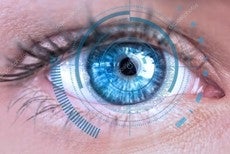Background
The global digital patient monitoring devices market size was valued at USD 38 billion in 2018 and is expected to reach USD 272.6 billion by 2026 at a compound annual growth rate (CAGR) of 27.9%. Home-based digital therapies are becoming increasingly popular for a range of neurological, psychiatric, sensory and lifestyle-associated disorders, particularly within the context of COVID-19. However, the success of digital therapies is critically dependant on patient adherence and engagement with the treatment.
This market is driven by the significant rise in the attention towards fitness and health, increased prevalence of chronic lifestyle-associated diseases such as hypertension and diabetes, and the adoption of wearable devices with wireless sensors that assist in real-time patient monitoring.
Description of the invention
The Real Time Compliance Monitoring System for Digital Therapies and Diagnostics provides a novel approach for monitoring a patient’s compliance to digital therapies (e.g. amblyopia treatment) that takes into account many parameters such as eye gaze, eye blinking, head pose, facial expression, relative eye stability and yawning. It is able to detect whether a patient is wearing the 3D glasses required for treatment and/or ophthalmic prescription during therapy. It can detect whether the patient is performing the therapy or someone else (e.g. a sibling). It also detects seven emotions in real-time, namely: "Happy", "Sad", "Disgust", "Neutral", "Anger", "Surprise" and "Scared".
Current competitive technologies developed for the digital treatments do not use any computer vision methods. While Patient Monitoring Systems and Driver Monitoring System use the computer vision-based monitoring (i.e. eye gaze, eyelid closure, face orientation and facial expressions like yawning for driver monitoring and patient monitoring purposes), they do not use the combination of all the parameters as this new technology.
The state-based approach uses feedback to regain the attention of the patient. It also measures various parameters such as eye gaze stability, relative eye stability, head stability, rate of engagement, total time of experiment and rate of eye blinking for adherence monitoring and further analysis.
Advantages
- Ability to track multiple parameters (eye gaze, head stability, emotions, rate of engagement, etc.) in real-time.
- Produces feedback signals to regain patient’s attention to treatment or alter their parent/caregiver/clinician upon detecting that the patient is upset or unengaged.
- Monitors patient adherence, perform analysis and identify trends.
Potential applications
- Treatment of ocular disorders (e.g. amblyopia) dementia and psychiatric disorders.
- Monitoring of drivers and disorders such as ADD and ADHD.
- Applications in advertising and film industries where companies can track consumer and/or audience interest.

Reference
10190
Patent status
Patent filed
Stage of development
Prototype developed and currently being validated
Contact
Scott Inwood
Director of Commercialization
Waterloo Commercialization Office
sinwood@uwaterloo.ca
uwaterloo.ca/research